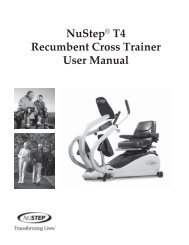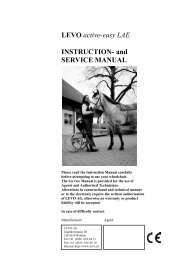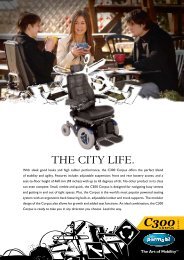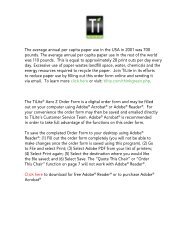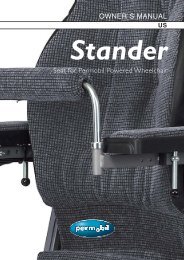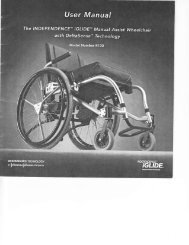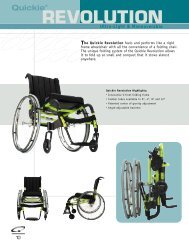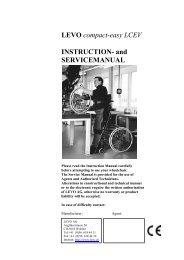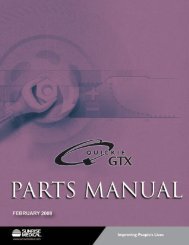M300 owners manual - abletrader.com
M300 owners manual - abletrader.com
M300 owners manual - abletrader.com
Create successful ePaper yourself
Turn your PDF publications into a flip-book with our unique Google optimized e-Paper software.
Owner´s Manual Permobil <strong>M300</strong><br />
Electromagnetic Interference<br />
m WARNING!<br />
It is very important that you read this information regarding the possible<br />
effects of Electromagnetic Interference on your powered wheelchair.<br />
Electromagnetic Interference (EMI) From Radio Wave Sources<br />
Powered wheelchairs and motorized scooters (in this text, both will be referred<br />
to as powered wheelchairs) may be susceptible to electromagnetic interference<br />
(EMI), which is interfering electromagnetic energy (EM) emitted from sources<br />
such as radio stations, TV stations, amateur radio (HAM) transmitters, twoway<br />
radios, and cellular phones.<br />
The interference (from radio wave sources) can cause the powered wheelchair<br />
to release its parking brakes, move by itself, or move in unintended directions.<br />
It can also permanently damage the powered wheelchair’s control system. The<br />
intensity of the interfering EM energy can be measured in volts per meter (V/m).<br />
Each powered wheelchair can resist EMI up to a certain intensity. This is called<br />
its ”immunity level”. The higher the immunity level, the greater the protection.<br />
The immunity level of this powered wheelchair model as shipped, with no further<br />
modification, is 20V/m in the range of 26 MHz to 1000 MHz.<br />
There are a number of sources of relatively intense electromagnetic fields in the<br />
everyday environment. Some of these sources are obvious and easy to avoid.<br />
Others are not apparent and exposure is unavoidable. However, we believe that<br />
by following the warnings listed below, your risk to EMI will be minimized.<br />
The sources of radiated EMI can be broadly classified into three types:<br />
1. Hand-held portable transceivers (transmitters-receivers) with the antenna<br />
mounted directly on the transmitting unit. Examples includes: citizens<br />
band (CB) radios, ”walkie talkie”, security, fire, and police transceivers, cellular<br />
telephones, and other personal <strong>com</strong>munication devices.<br />
CAUTION! Some cellular telephones and similar devices transmit signals<br />
while they are ON, even when not being used.<br />
2. Medium-range mobile transceivers such as those used in police cars, fire<br />
trucks, ambulances, and taxis. These usually have the antenna mounted on<br />
the outside of the vehicle.<br />
3. Long-range transmitters and transceivers such as <strong>com</strong>mercial broadcast<br />
transmitter (radio and TV broadcast antenna tower) and amateur (HAM)<br />
radios.<br />
109





